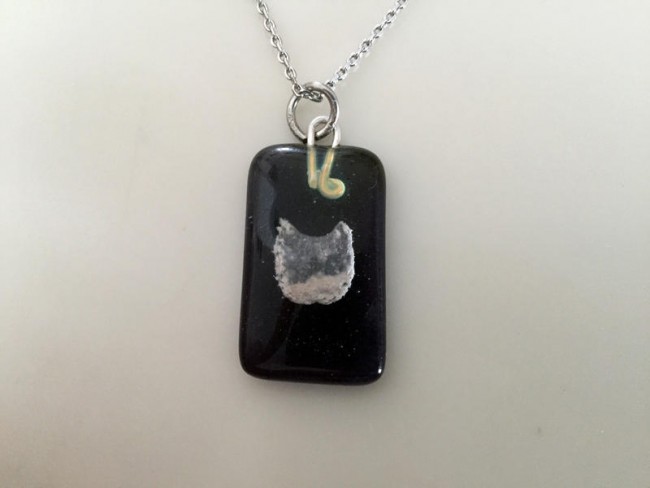
When someone dies, a lot of people honor the memory of a loved one with a funeral.
Those who chose a traditional casket burial spend about $7,000 or more. A service that includes a cremation costs about a third of that.
But there’s a growing number of people who want to remember their loved ones long after the funeral ends in a different way.
One Tampa Bay area artist creates a memorial with a non-traditional twist.
Inside her studio in a two-car garage in Land O’ Lakes, Michele Palenik looks for the perfect shade of green for a necklace pendant. After she finds it, she cuts the glass into a circle with a handheld scoring tool and taps the edges. The small circle pops out.
She used to focus on carving wax to cast gold jewelry. A few years ago, the artist at Purple Cloud Studio, added fused glass products to her repertoire.
Her husband, a freelance funeral director, eventually urged her to make art using cremated remains.
She was a bit squeamish at first.

“Ugh, ewww, ewww. I don’t want to do that,” Michele Palenik said about the first time she heard of cremation jewelry.
But now she’s been making it for 13 years.
Michael Nicodemus, the vice president of cremation services for the National Funeral Directors Association, said that once upon a time, urns were the only place option for storing ashes.
Not anymore.
“Bird baths, wind chimes, sun dials, pyrotechnics,” Nicodemus said of some of the options. “Who would have ever thought of this 15 or 20 years ago? Abstract paintings with cremated remains mixed into the paint and so on.”
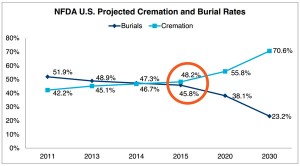
“People find me online and apparently cremation jewelry is a very highly searched for Google term,” Michele Palenik said.
Nicodemus said cremation is cheaper than traditional burial and can be more environmentally friendly. Those are just two of many reasons more people are turning to cremation.
“Right now, in the year 2015, it’s 63.4 percent and in 2020, that will jump to 69 percent and in 15 years, the year 2030, that will be 77 percent, so almost 80 percent of all Floridians by the year 2030 will be cremated,” Nicodemus said.
Palenik’s husband, Marty, wasn’t always sold on the idea of wearable urns.
“I thought the whole concept of that was kind of ludicrous,” Marty Palenik said. “I thought, ‘who’s gonna want to wear mom and pop around their neck?’ I thought, ‘that’s not gonna work.'”
But it does work. Michele Palenik gets several requests a week for cremation jewelry. The pieces start at $75 and go up depending on size and complexity.
But not all Michele’s customers feel comfortable telling people what’s hanging around their neck.
Nelson Jantzen, 77, ordered a necklace five years ago. His wife, Dianne, died 10 years ago. But now, everywhere Jantzen goes, Dianne does, too.
“I don’t say it’s my deceased wife’s ashes,” Jantzen said. “People get freaked out.”
Dianne’s ashes are nestled in a rectangular glass pendant in the shape of a cat’s face.
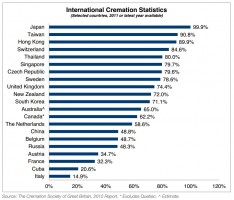 “I asked my present wife if she minded if I had it made, of jewelry with the ashes,” Jantzen said. “And we love cats, so Michele made me a beautiful onyx-looking one with a cat’s face and ears, which is the ashes.”
“I asked my present wife if she minded if I had it made, of jewelry with the ashes,” Jantzen said. “And we love cats, so Michele made me a beautiful onyx-looking one with a cat’s face and ears, which is the ashes.”
Jantzen said he likes that the jewelry is not as obvious an urn atop a mantle. Only close friends and family understand the necklace’s significance, but Jantzen takes comfort in knowing a part of her hangs close to his heart.
“She’s not completely done away with, forever and ever,” Jantzen said. “There’s part of her still here.”
Michele Palenik says the jewelry is a tangible reminder that their loved one is still around in some form.
Back in her studio, she pours a tiny mound of ashes onto the green glass. She presses the ashes into shapes like hearts or swirls or even teddy bears — whatever the family wants.
“I think people need that closure, the need to feel close,” Michele Palenik said. “People pass away with a variety of family issues and struggles and challenges, and I think there’s a lot of emotion tied up and maybe you haven’t made peace with your family.”
“Maybe having that person memorialized in a piece of jewelry is something you can see and feel in touch every day, its gives you a more visceral experience.”
It’s just another way to work through the tears, she said.
![]()
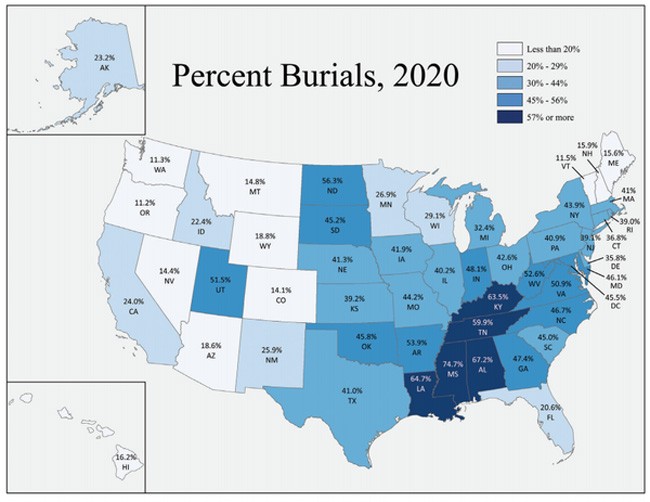
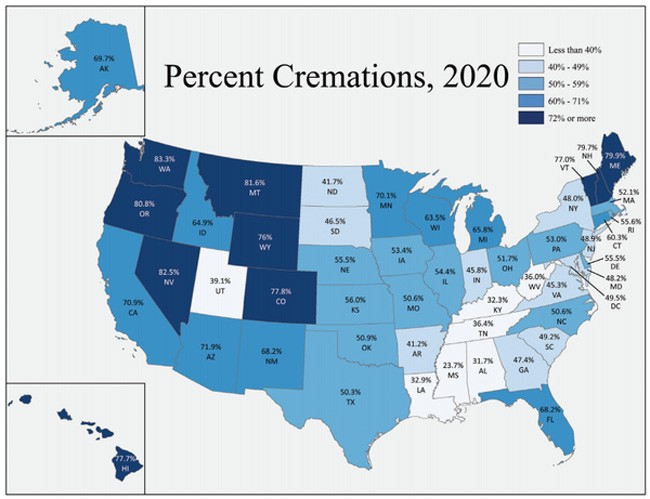





























Groot says
We placed my mom’s ashes in an urn and the urn is in a mausoleum with a plaque for both of my parents. My dad loved the ocean and his navy days so, his ashes were scattered in the Atlantic. As I recall, Jerry Garcia’s ashes were scattered 50% under the Golden Gate and 50% in the Ganges. We can be inventive as to how we memorialize loved ones. I’m not sure I want someones remains in the shape of a pet hanging around my neck though.
theevoice says
true dat!!!
Tita Ganda says
Every day, I wear a necklace with a polished stainless steel cylindrical pendant, and those not in the know can ever tell that it contains a small amount of my husband’s cremains. It gives me comfort to have my husband close to my heart at all times.
Gramps says
I will have my ashes made into a miniature leg pendant. Then when my grandchildren remember me or my children, they can pull the leg….I always tell them ” Don’t be pulling grandpops leg ” !!!!!